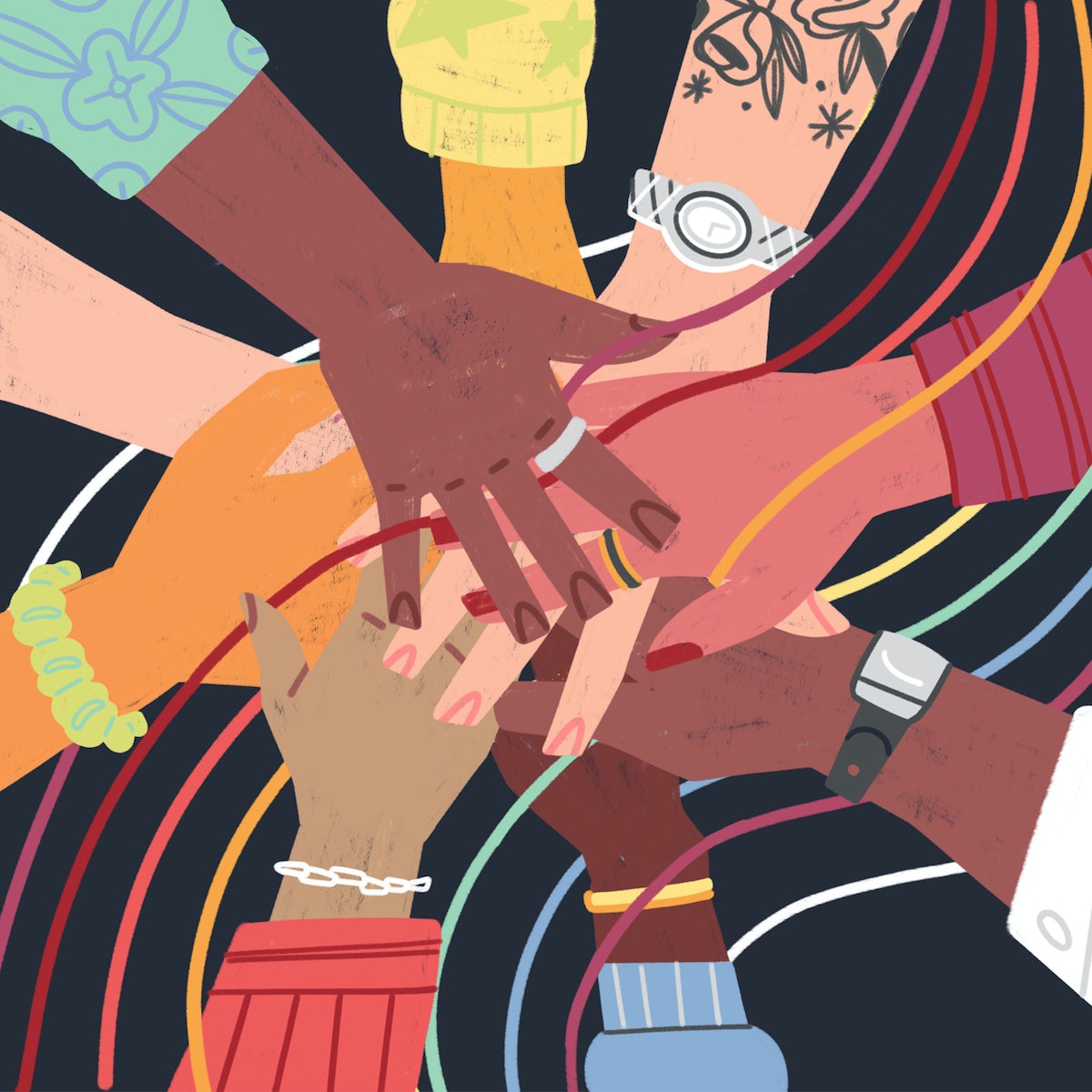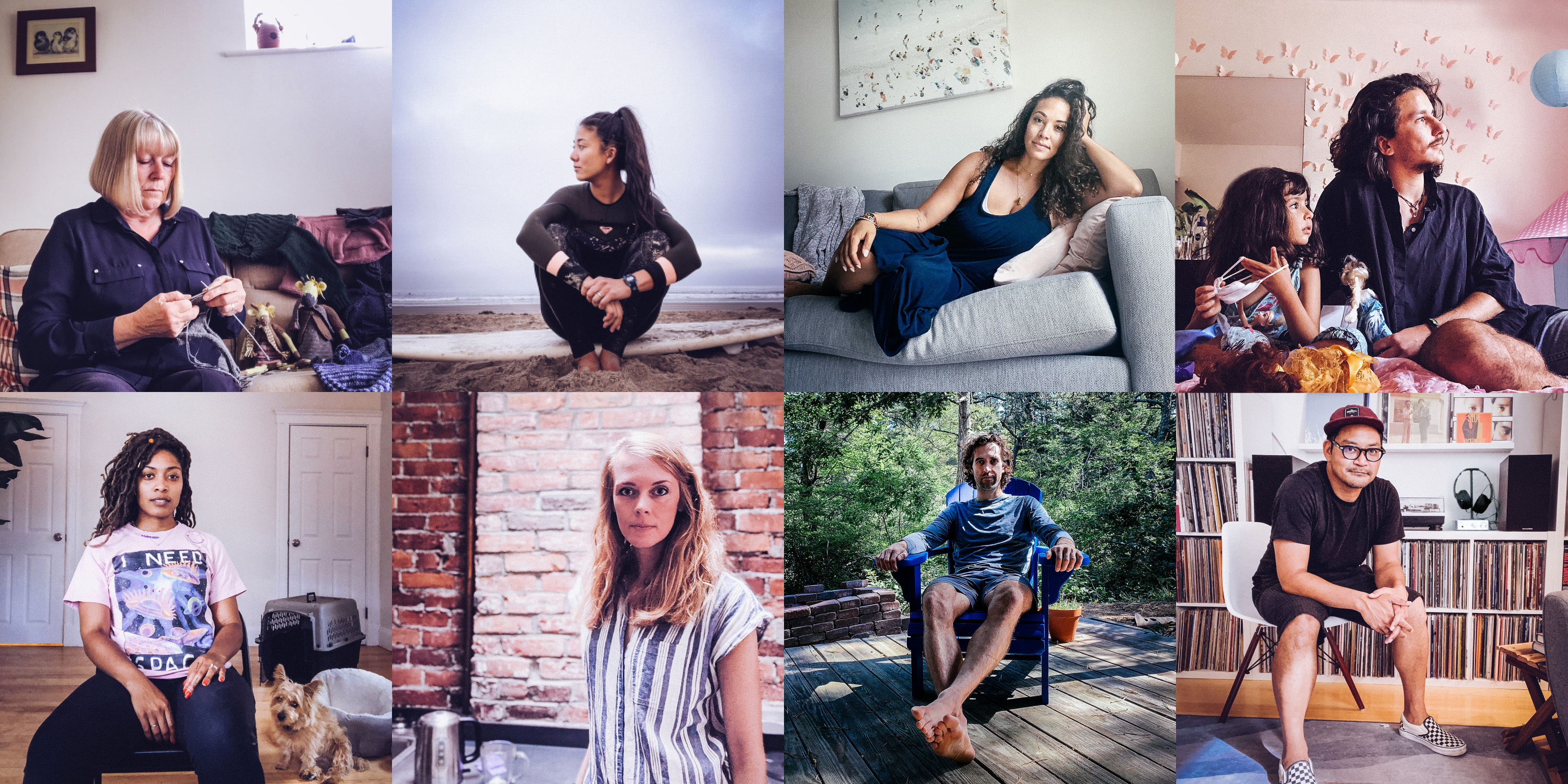Queer designers share their visions for the future of design

One of my favorite things about IDEO is the people. There is a culture of creativity and openness here that encourages people to really see one another as whole humans, beyond their title or credentials.
As a writer, I’m particularly interested in getting to know IDEOers on a personal level. By seeing what makes us unique as individuals, I can tell better stories about the company as a whole—people from very different backgrounds and perspectives coming together to design for systems change around the world.
As a queer woman, I’m especially invested in seeing how that work drives equality and acceptance for all vulnerable communities—helping to make the world a place where we can all live as our full selves. To learn more, I reached out to IDEO’s queer employee resource group, PRIDEO, and interviewed the community. I asked about the ways in which they bring their LGBTQIA+ identities to work, the trends they’re starting to see emerge because of it, and the hopes they have for the future of queer design. Here’s what they had to say.
Access is the next wave of design
Historically, queers have had to fight for access. Access to freedom, to healthcare, job security, and a place in society as a normal human being. The fight is far from over, but that is something that all queers remember when they take on a design project, whatever it is. When I was designing brand strategy for a recent client website, I had to ask, “Why is there only one type of person in the room?” (White male.)
My queerness gives me the language and the “radar” to sniff inequalities out with a vengeance. Knowing we have to fight to “redesign” systems to accommodate and accept all types of queerness, it helps me see beyond the demographics listed in the brief, and to know that access is the next/current wave of design. There is a global reckoning for racial equity within design, for our entire process to change, for leadership to perhaps step down to make room for actual diversity at the top, and all of that is just so much more glaringly obvious when you are queer in this world—and in the design field.
—Stuart Getty, Design Lead and Writer, San Francisco
A focus on removing barriers
Being queer, I think a lot about how I might design to remove barriers. I have the opportunity to update outdated language and to create environments that celebrate the beauty of diversity. I can facilitate new cultural habits to bring in needed voices into a conversation. My role as a designer at IDEO is to listen and set aside my assumptions and my ego. There is always a need for collaboration. It takes many of us, with different lived experiences, to see a multitude of barriers to remove.
—Alan Ratliff, Senior Lead, Inclusion, Culture and Change, San Francisco

Choosing pride as an act of rebellion
Being a Black woman in today’s society is hard. Adding queer to the equation makes it even harder. However, I choose pride as an act of self-care. I choose pride as an act of rebellion. It’s extremely important for me to show up to every space, bringing my full self to every conversation, and a company like IDEO provides a space for me to do so. I am extremely grateful for the employee communities I’ve been able to join during my time here. Freely engaging with those who understand and support me is a gift that has helped me bring my full self to work.
—Emanie White-Heard, Coordinator, New York
Moving away from “the way things have always been done”
When you come out, you're recognizing your difference and you choose to express that difference openly. In coming out, you are born into bringing a diverse opinion either with your family, your friends, or society on the whole.
When I came out pre-gay marriage, it was still a quiet thing to be gay—very little representation in the media, The L Word wasn't even out yet. It was in this moment that I embraced my own voice and its ability to create reality.
In that way, I realized that I got to design what sexuality meant to me. It was like I had been given a blank canvas. I could choose what, if anything, I wanted to bring from mainstream interactions into my own perception of what relationship, gender and sex meant. I learned that nothing is 0 or 1, all male or all female, but rather it was a spectrum of choice that could be tweaked from moment to moment if I wanted to. In that effort, you realize that everyone will approach this balance differently for themselves as well. In work, I could hold my “design” as valid just as much as someone else's “design.” Two things, or more, could be true at the same time—none any more “right” than another.
As a designer, you have to be willing to put your ideas out there even if they differ from the status quo or the way things have always been done, you need to cultivate a willingness to question assumptions, even your own, and you have to be able to do all that in the context of others who will bring their own realities to the table as well—being gay helps me do that every day.
—Meg Rice, Lead Learning Architect, San Francisco
The importance of visibility
Queerness at work can have different levels of visibility—and for me, it’s important that I show up visibly queer at work. Growing up gay in Bolivia, I rarely crossed paths with openly queer people. The culture is conservative, and was even more conservative back then. I present as gender fluid, and it was difficult to believe I’d be able to express myself in an authentic way while still having a chance at success. However, feeling free in my expression is really important for my creativity. So, when I started working, I decided to not hold back—even in professional settings—in hopes that at least one queer kid would see visible queerness in the context of work and feel like it means they, too, can express themselves authentically—especially within my Latinx community.
—Bruno Olmedo Quiroga, Senior Design Researcher, Cambridge
Creating your own playbook
I came of age in the 1980s. My introduction to being “gay" occurred when I was an 11 year-old paperboy, made apparent through the headline: RARE CANCER SEEN IN 41 HOMOSEXUALS. Thus began my fraught sexual awakening: panic, self-loathing, and, most importantly, secrecy. The realization was significant and isolating, prompting me to turn inward, a years-long journey of self-reflection. Emerging from this, I saw everything differently, structurally: the world was wrong—not me.
When the world doesn't reflect you as you are, you have to manage the cognitive dissonance creatively, sometimes in bespoke and idiosyncratic ways. When no playbook exists, you create everything from scratch: norms, family, a sense of safety. You have to work hard to find your people. Coming up as a gay man was my test to pass—and it turned out to be a blessing.
On the iterative path to accepting my identity, I grew aware of the contradictions swarming around me, around all of us. I became comfortable with ambiguity. I learned how to compromise, to collaborate, to be flexible; how to celebrate small successes. I tuned into the inflections in people: what they say and what they do, and could see opportunities. I learned how to listen, to be pragmatic, to be resilient. This is design.
Nothing is ever perfect. And a lot of things are still very much lousy. But everything can be improved upon. Design guarantees this. And it's my life's work. I'm living the dream that my 11 year-old self could never have imagined, that many 11 year-olds can now see writ large: you can love who you want, you can be loved, you can do this without shame. I think of all my brothers and sisters who didn’t make it through their struggle unscathed. For them, pride and progress are things I’ll never take for granted. It's not perfect, but perfecting. Somebody pinch me. How could I not be optimistic?
—Mark Del Lima, Interaction Designer, San Francisco
Having greater empathy for others
Growing up gay in a small town in China has been a rather lonely/alienating experience. From being bullied at school because of my femininity, to being screamed at by parents because they found texts on my phone implying my crush to a boy in class, everything felt like it was denying my existence. Being in that environment, I experienced a lot of emotional pain and it made me into a very sensitive person. I’m now more able to recognize and empathize with someone who is going through emotional turmoil. It gives me the ability to be comfortable around someone who is expressing emotional pain. I’m able to handle the depth that a lot of people are uncomfortable with—meaning that I can better comfort that person, or turn emotion into action to drive change.
—Anonymous IDEOer, Chicago

Recognizing your own privilege
Once I was out with a friend when she had to go to the restroom. Then the police arrived: someone had called security on her. While I was shocked, my friend was not. As a trans woman of color, she was used to being policed for the smallest everyday action, like going to a public restroom and nearly being arrested for her gender identity.
This is an example of how being part of queer and trans communities taught me how systems have failed us. I quickly learned to have empathy for my friend who not only had a different experience than me but faced more barriers as a trans person. I realized how I take things for granted, like the simple act of moving freely or feeling safe as a cis gender person with male privilege. Being queer and a designer, it’s made me want to turn that empathy and realization into actions. I can see how we can redesign systems big and small—from supporting the overhaul of broken social systems to being mindful everyday in how I use gender pronouns to be more inclusive.
2020 marked the 50th anniversary of the first Pride protest following the Stonewall riots in response to police brutality. And since then we’ve had many months of protests against police murders of black people. As a queer person of color, I am deeply saddened by the persistence of anti-blackness and racism, as well as violence against Black trans folx and anti-trans Bathroom Bills that perpetuate harassment like my friend endured. And yet as I look back over the decades of movement building and the past months of action, being queer also gives me hope to envision that another world is possible.
—John Won, Last Mile Money Co-Lead, San Francisco
Illustrations by Cassandra Fountaine
Words and art

Subscribe

.svg)









